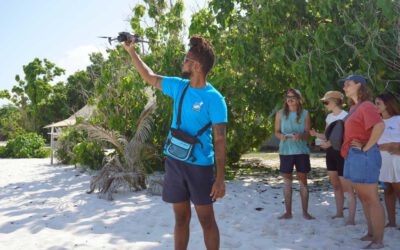On Friday 20th of May at 9am Haiyin will present her M.Sc. thesis “Monitoring Gypsy Moth Outbreak Using Sentinel-1 and Sentinel-2 Data”. From the abstract: “Gypsy moth Lymantria dispar (L.) is a serious pest in deciduous forests, the larvae of which can feed on a large variety of host tree species. This study is focused on two objectives: 1) detect gypsy moth induced defoliation over large area using Sentinel-1 and Sentinel-2 data. 2) explore biotic and abiotic factors that may influence gypsy moth defoliation severity. Three sub-models and the final model were built up in the study. Sub-model 1 (tree species composition) revealed the benefits of Sentinel-2 data in tree species composition and species richness (SR) modeling in oak-dominant forests, with R2 of 0.846 (NMDS1) and 0.72 (SR). Sub-model 2 (stand structure heterogeneity) demonstrated the high performance of Sentinel-1 radar data in stand structure modelling, regarding both vertical structure heterogeneity (PR_CANUND, R2 = 0.731) and horizontal structure heterogeneity (total area of gaps, R2 = 0.576). Sub-model 3 (defoliation severity) quantified defoliation severity in both the intensive sampling area (n = 38) and large area (n = 2800) by as the defoliation index. The final model (factor exploration) showed that the factors considered in this study could explain 46.77% and 17.14% of the defoliation index in intensive sampling area (n = 38) and large area (n = 2800) respectively. The importance of these factors and their correlation with defoliation index were depicted as well. Caterpillar density, egg mass density and temperature showed positive correlation to defoliation index. Tree species with high NMDS1, such as European oak (Quercus robur) and goat willow (Salix caprea), also positively contributed to high defoliation index. Canopies with penetration ratio at a certain level (PR_CANUND around 0.7) might prevent defoliation, while denser canopies (PR_CANUND above 0.8) seemed to be more likely to suffer from defoliation than canopies with less density (PR_CANUND below 0.6) according to the results.”
Supervisors: Dr. Soyeon Bae & Dr. Martin Wegmann










